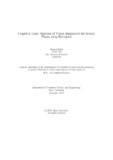| dc.contributor.advisor | Parvez, Mohammad Zavid | |
| dc.contributor.author | Kabir, Raiyan | |
| dc.contributor.author | Rashid, Md. Mamun Or | |
| dc.date.accessioned | 2020-10-28T05:17:48Z | |
| dc.date.available | 2020-10-28T05:17:48Z | |
| dc.date.copyright | 2019 | |
| dc.date.issued | 2019-12 | |
| dc.identifier.other | ID: 16101140 | |
| dc.identifier.other | ID: 15301063 | |
| dc.identifier.uri | http://hdl.handle.net/10361/14071 | |
| dc.description | This thesis is submitted in partial fulfillment of the requirements for the degree of Bachelor of Science in Computer Science, 2019. | en_US |
| dc.description | Cataloged from PDF version of thesis. | |
| dc.description | Includes bibliographical references (pages 26-28). | |
| dc.description.abstract | In this current world, approximately 290 millions of people are partially or fully
blind. They can not roam around like the normal people. Visually Impaired People
(VIP) have to face many obstacles everyday in inward and outward places. Moreover, it is pretty difficult for them to move for their daily works. They face difficulties
when they try to move one place to another. Mobility in different environments in
inward can be challenging and emotionally stressful tasks for VIPs when they are
navigating in an unfamiliar environment. There are some navigation tools such as
guide dog white cane but these aids are failed to uprootd key problems such as
including route planning, discovering landmarks. It is matter of great sorrow that
still in this era of technology we could not help them with a proper solution that
includes all the key problem. These circumstances can be both psychological and
social. Electroencephalogram (EEG) is a tool that records electrical activities over
the scalp. This is a very useful technique which is used widely all over the world.
In this paper, we will measure cognitive load through EEG signals for observing the
usability test of navigating tools for determine whether these navigating tools are
helpful or not . A classification accuracy of 77.35% for automated door,82.78%of
accuracy for narrow space, 84.91% of accuracy for open space, 88.99% of accuracy
for elevator, 79.19% of accuracy for stairs, 83.47% of accuracy for moving objects
and 86.89% of accuracy for sound, which was achieved by this proposed model. In
this paper observing usability test of navigating aids so that VIPs can feel confidence
and comfortable when using any navigating tools for roaming around | en_US |
| dc.description.statementofresponsibility | Raiyan Kabir | |
| dc.description.statementofresponsibility | Md. Mamun Or Rashid | |
| dc.format.extent | 28 pages | |
| dc.language.iso | en_US | en_US |
| dc.publisher | Brac University | en_US |
| dc.rights | Brac University theses are protected by copyright. They may be viewed from this source for any purpose, but reproduction or distribution in any format is prohibited without written permission. | |
| dc.subject | Cognitive Load Detection | en_US |
| dc.subject | Vision Impaired | en_US |
| dc.subject | Bio-signal | en_US |
| dc.title | Cognitive load detection of vision impaired in the inward places using Bio-signal | en_US |
| dc.type | Thesis | en_US |
| dc.contributor.department | Department of Computer Science and Engineering, Brac University | |
| dc.description.degree | B. Computer Science | |

